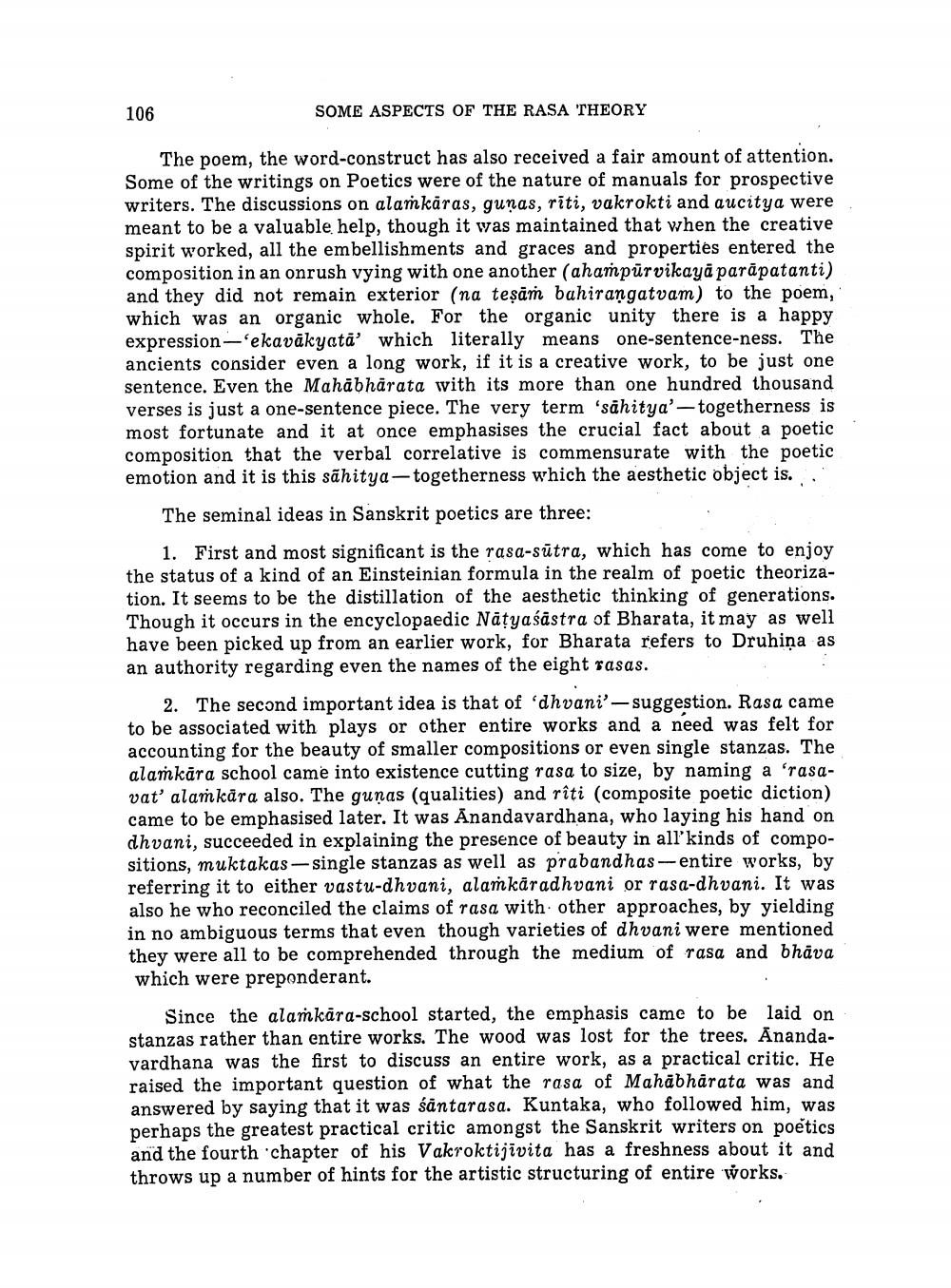________________
106
SOME ASPECTS OF THE RASA THEORY
The poem, the word-construct has also received a fair amount of attention. Some of the writings on Poetics were of the nature of manuals for prospective writers. The discussions on alamkāras, gunas, riti, vakrokti and aucitya were meant to be a valuable help, though it was maintained that when the creative spirit worked, all the embellishments and graces and properties entered the composition in an onrush vying with one another (ahampūrvikayā parāpatanti) and they did not remain exterior (na teşāṁ bahirangatvam) to the poem, which was an organic whole. For the organic unity there is a happy expression - ekavākyatā' which literally means one-sentence-ness. The ancients consider even a long work, if it is a creative work, to be just one sentence. Even the Mahabharata with its more than one hundred thousand verses is just a one-sentence piece. The very term 'sahitya'-togetherness is most fortunate and it at once emphasises the crucial fact about a poetic composition that the verbal correlative is commensurate with the poetic emotion and it is this sāhitya - togetherness which the aesthetic object is.."
The seminal ideas in Sanskrit poetics are three:
1. First and most significant is the rasa-sútra, which has come to enjoy the status of a kind of an Einsteinian formula in the realm of poetic theorization. It seems to be the distillation of the aesthetic thinking of generations. Though it occurs in the encyclopaedic Nățyaśāstra of Bharata, it may as well have been picked up from an earlier work, for Bharata refers to Druhiņa as an authority regarding even the names of the eight sasas.
2. The second important idea is that of 'dhvani'- suggestion. Rasa came to be associated with plays or other entire works and a need was felt for accounting for the beauty of smaller compositions or even single stanzas. The alamkāra school came into existence cutting rasa to size, by naming a 'rasavat' alamkāra also. The gunas (qualities) and rîti (composite poetic diction) came to be emphasised later. It was Anandavardhana, who laying his hand on dhvani, succeeded in explaining the presence of beauty in all'kinds of compositions, muktakas-single stanzas as well as prabandhas -- entire works, by referring it to either vastu-dhvani, alamkāradhvani or rasa-dhvani. It was also he who reconciled the claims of rasa with other approaches, by yielding in no ambiguous terms that even though varieties of dhvani were mentioned they were all to be comprehended through the medium of rasa and bhāva which were preponderant.
Since the alamkara-school started, the emphasis came to be laid on stanzas rather than entire works. The wood was lost for the trees. Anandavardhana was the first to discuss an entire work, as a practical critic. He raised the important question of what the rasa of Mahabharata was and answered by saying that it was śāntarasa. Kuntaka, who followed him, was perhaps the greatest practical critic amongst the Sanskrit writers on poetics and the fourth chapter of his Vakroktijivita has a freshness about it and throws up a number of hints for the artistic structuring of entire works.




